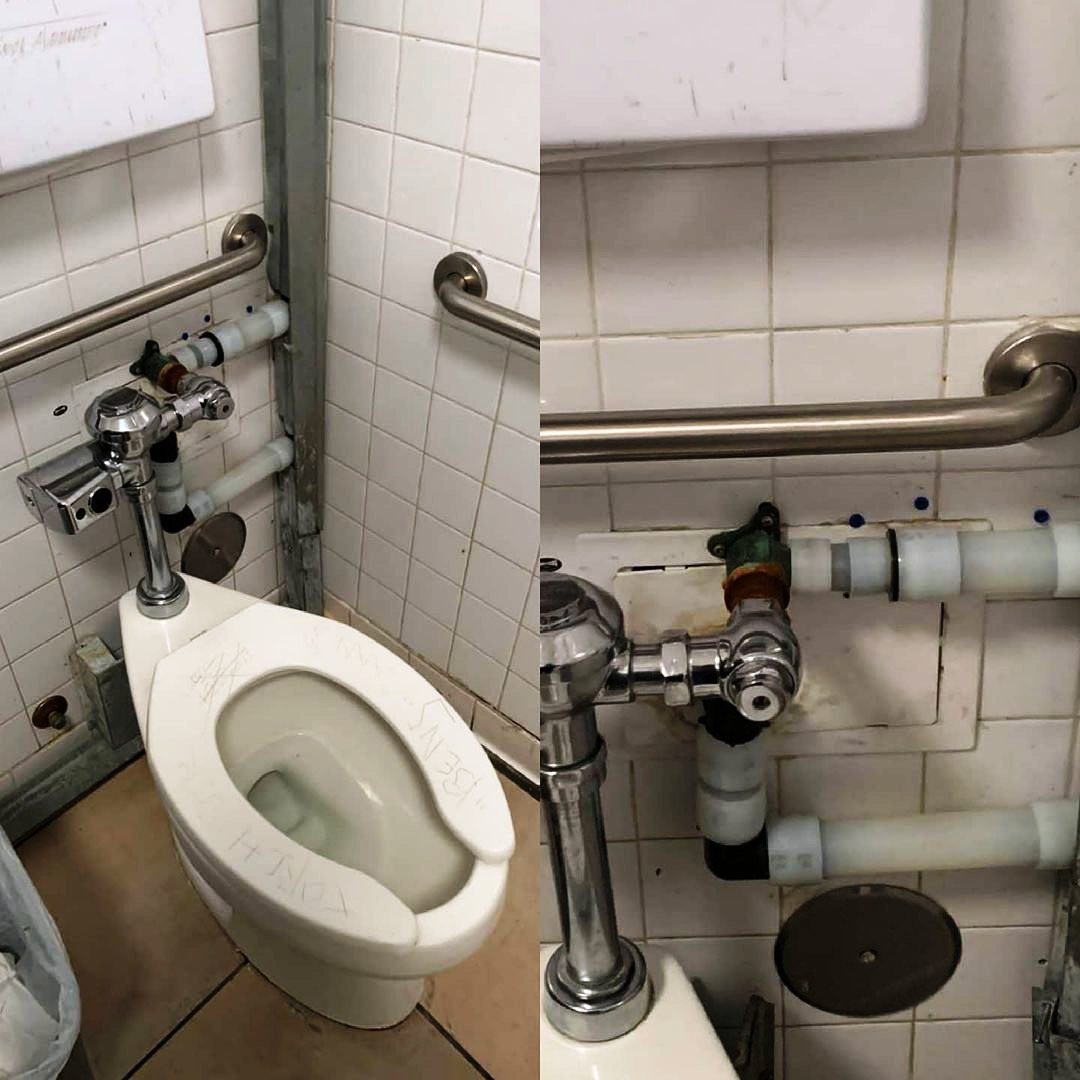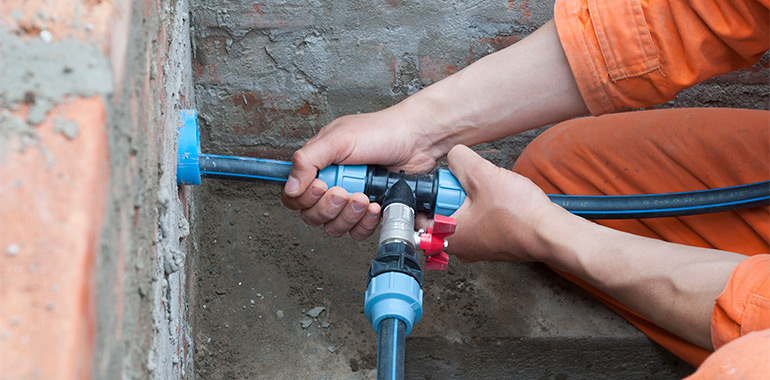Are you searching for information and facts on Why Do My Plumbing Pipes Make A Knocking Noise?

To diagnose noisy plumbing, it is essential to determine first whether the undesirable audios take place on the system's inlet side-in various other words, when water is transformed on-or on the drainpipe side. Noises on the inlet side have actually differed reasons: extreme water stress, worn valve and faucet parts, improperly connected pumps or other appliances, inaccurately positioned pipeline bolts, and also plumbing runs having way too many limited bends or various other constraints. Noises on the drain side typically come from bad place or, just like some inlet side sound, a design including tight bends.
Hissing
Hissing noise that takes place when a tap is opened a little normally signals extreme water stress. Consult your regional public utility if you believe this trouble; it will certainly have the ability to tell you the water pressure in your area and also can mount a pressurereducing shutoff on the incoming supply of water pipe if needed.
Other Inlet Side Noises
Creaking, squeaking, damaging, breaking, as well as tapping usually are caused by the growth or contraction of pipes, generally copper ones supplying hot water. The audios happen as the pipes slide against loosened bolts or strike close-by house framework. You can commonly pinpoint the location of the trouble if the pipes are revealed; just follow the audio when the pipelines are making noise. Most likely you will certainly find a loose pipeline hanger or an area where pipes exist so near to floor joists or various other framing pieces that they clatter versus them. Connecting foam pipe insulation around the pipelines at the point of contact should correct the issue. Make sure straps and also hangers are secure as well as offer ample support. Where possible, pipeline fasteners need to be connected to massive structural components such as foundation wall surfaces rather than to framing; doing so minimizes the transmission of vibrations from plumbing to surface areas that can amplify and also transfer them. If affixing fasteners to framing is unavoidable, wrap pipelines with insulation or other resistant material where they contact fasteners, and also sandwich the ends of new bolts between rubber washers when mounting them.
Fixing plumbing runs that experience flow-restricting tight or many bends is a last resort that ought to be taken on only after getting in touch with a skilled plumbing professional. Regrettably, this scenario is rather common in older homes that might not have been developed with interior plumbing or that have seen a number of remodels, specifically by amateurs.
Babbling or Shrilling
Intense chattering or screeching that happens when a shutoff or faucet is switched on, which usually vanishes when the installation is opened totally, signals loose or faulty inner components. The solution is to change the valve or faucet with a brand-new one.
Pumps and also appliances such as washing makers and also dishwashers can transfer electric motor sound to pipelines if they are improperly attached. Link such items to plumbing with plastic or rubber hoses-never stiff pipe-to isolate them.
Drain Sound
On the drainpipe side of plumbing, the chief goals are to eliminate surfaces that can be struck by falling or hurrying water and also to shield pipelines to have unavoidable sounds.
In new building, bath tubs, shower stalls, commodes, and also wallmounted sinks and basins should be set on or against durable underlayments to minimize the transmission of sound through them. Water-saving toilets as well as faucets are less noisy than traditional designs; mount them as opposed to older kinds even if codes in your location still allow making use of older fixtures.
Drainpipes that do not run vertically to the basement or that branch into horizontal pipe runs supported at floor joists or other framing present particularly troublesome noise troubles. Such pipelines are big sufficient to emit significant vibration; they likewise carry significant amounts of water, which makes the situation even worse. In brand-new building, specify cast-iron soil pipes (the huge pipelines that drain pipes bathrooms) if you can afford them. Their massiveness includes much of the noise made by water travelling through them. Additionally, avoid routing drains in wall surfaces shown to bed rooms as well as rooms where people collect. Wall surfaces consisting of drainpipes should be soundproofed as was described earlier, using double panels of sound-insulating fiber board as well as wallboard. Pipes themselves can be wrapped with unique fiberglass insulation created the function; such pipes have an impervious plastic skin (often including lead). Outcomes are not always acceptable.
Thudding
Thudding sound, usually accompanied by trembling pipes, when a tap or device valve is turned off is a problem called water hammer. The noise and also resonance are brought on by the resounding wave of pressure in the water, which instantly has no location to go. In some cases opening up a shutoff that discharges water promptly right into a section of piping having a limitation, elbow, or tee fitting can generate the exact same condition.
Water hammer can generally be treated by installing installations called air chambers or shock absorbers in the plumbing to which the problem shutoffs or faucets are attached. These gadgets allow the shock wave produced by the halted circulation of water to dissipate in the air they consist of, which (unlike water) is compressible.
Older plumbing systems may have brief vertical areas of capped pipe behind wall surfaces on faucet competes the exact same objective; these can ultimately loaded with water, minimizing or damaging their effectiveness. The treatment is to drain the water supply completely by turning off the main water system valve as well as opening up all faucets. After that open the major supply valve and also close the faucets individually, starting with the tap nearest the valve as well as finishing with the one farthest away.
WHY IS MY PLUMBING MAKING SO MUCH NOISE?
This noise indeed sounds like someone is banging a hammer against your pipes! It happens when a faucet is opened, allowed to run for a bit, then quickly shut — causing the rushing water to slam against the shut-off valve.
To remedy this, you’ll need to check and refill your air chamber. Air chambers are filled with — you guessed it — air and help absorb the shock of moving water (that comes to a sudden stop). Over time, these chambers can fill with water, making them less effective.
You’ll want to turn off your home’s water supply, then open ALL faucets (from the bathroom sink to outdoor hose bib) to drain your pipes. Then, turn the water back on and hopefully the noise stops! If you’re still hearing the sound, give us a call to examine further.
Whistles
Whistling sounds can be frustrating, as sometimes the source isn’t easily identified. However, if you can pinpoint which faucet or valve that may be the cause, you’ll likely encounter a worn gasket or washer — an easy fix if you replace the worn parts!Whistling sounds from elsewhere can mean a number of things — from high water pressure to mineral deposits. Your best plan of attack here is to give our plumbing experts a call. We’ll be able to determine where the noise is coming from and what the cause may be, then recommend an effective fix!
Cracks or Ticks
Cracking or ticking typically comes from hot water going through cold, copper pipes. This causes the copper to expand resulting in a cracking or ticking sound. Once the pipes stop expanding, the noise should stop as well.
Pro tip: you may want to lower the temperature of your water heater to see if that helps lessen the sound, or wrapping the pipe in insulation can also help muffle the noise.
Bangs
Bangs typically come from water pressure that’s too high. To test for high water pressure, get a pressure gauge and attach it to your faucet. Water pressure should be no higher than 80 psi (pounds per square inch) and also no lower than 40 psi. If you find a number greater than 80 psi, then you’ve found your problem!
Next step is to give us a call in order to install a pressure regulator. Trust us, you don’t want to wait to resolve this issue. Not only is the sound annoying, but high water pressure can be destructive to your home — including damaging certain appliances, like your washer and dishwasher.
Dripping
You might be accustom to the slow quiet drip your kitchen faucet makes. You might have even tuned out your bathroom sink dripping and drabbing all day long — but it’s time to find its cause.
A slow drip could signify a variety of easy to fix issues, such as a worn out O ring, or loose part. And by ignoring the drip, you could be wasting up to 2,000 gallons of water a year! So start conserving water — get it looked at ASAP.
https://www.pwessig.com/blog/2018/december/why-is-my-plumbing-making-so-much-noise-/

As a devoted reader about Why Your Water Pipes Are Noisy and How To Shut Them Up, I was thinking sharing that excerpt was appropriate. Liked our review? Please share it. Help another person locate it. We value reading our article about How To Fix Noisy Pipes.
Call Us Today